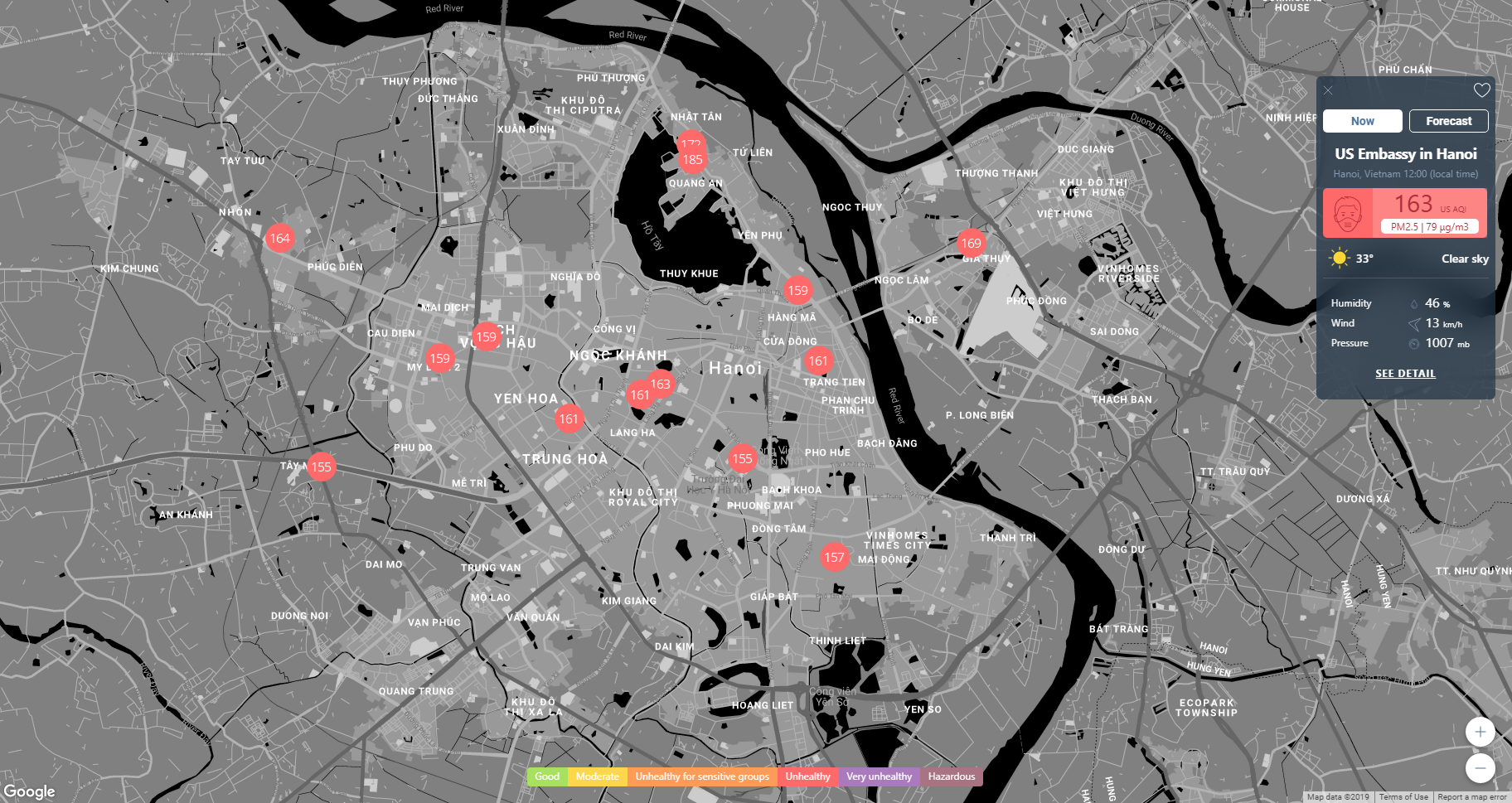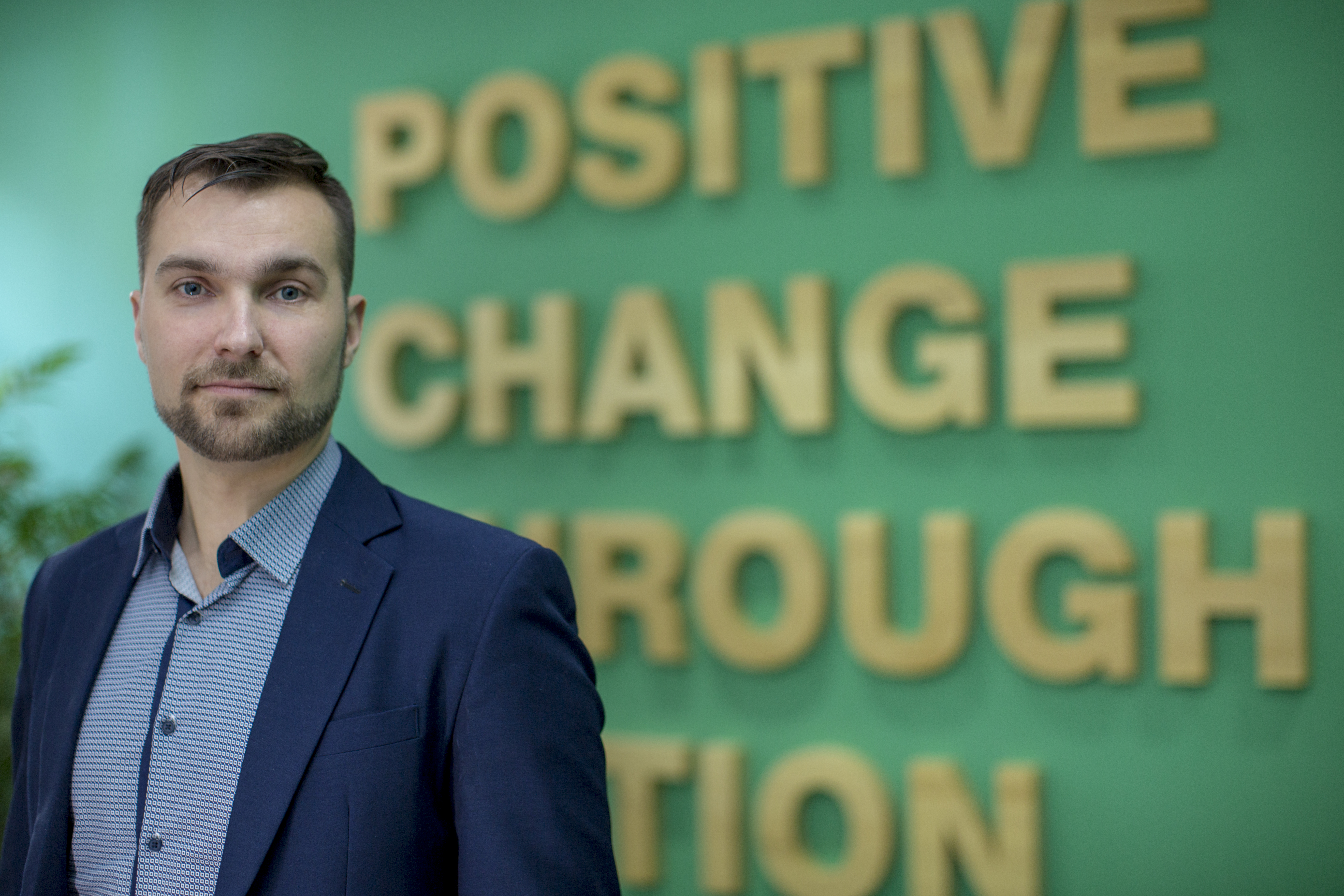Taking the top spot on the list of the world’s cities with the worst air pollution isn’t exactly a coveted title. Still, Hanoi managed to eke its way into first place on the list on September 26.
According to Airvisual, an app that tracks air quality in real-time, Hanoi and Ho Chi Minh City, Vietnam’s two largest cities, are frequently listed among the world’s worst 20 metropolises in terms of air quality.
Though many Vietnamese are becoming more aware of the dangers posed by air pollution, many more are wary of air quality monitoring apps and unsure of what the number mean in relation to their health.
To find out more around the topic, Tuoi Tre News interviewed Lauri Myllyvirta, the lead Air Pollution Analyst for Greenpeace, an independent global campaigning organization that acts to change attitudes and behavior, protect and conserve the environment and promote peace.
How reliable is AirVisual and what is the best way to measure a country’s air quality?
The AirVisual platform compiles data from multiple sources, the most reliable of which are high-grade monitors such as those at the U.S. Embassy in Hanoi and the U.S. Consulate in Ho Chi Minh City.
Most of the other data come from low-cost monitoring devices sold by AirVisual.
Since the current cloud of smog first appeared in Hanoi, it seems that the readings from these two types of monitors have been very consistent. For example, the current situation below, where reading by the monitor at the U.S. Embassy was 163, different from other monitors in the capital.
 |
Air quality should, ideally, be monitored across the country, so that everyone can access air quality data that is representative of the areas where they live and work. Multiple key pollutants should be monitored including, but not limited to, PM2.5. All recorded data should absolutely be made available in real time so that it's possible for people to take measures to protect themselves.
Some Vietnamese are suspect of AirVisual, believing that there must be some far cities experiencing war or wildfire making their air more polluted than Hanoi or Ho Chi Minh City. How can we explain this?
The ranking is limited to locations where air quality data is available, although AirVisual does work to increase its coverage by employing satellite-based air quality measurements.
Still, data indicates that even most of the areas affected by the forest fires in Indonesia, as well as the region of north India known for having the world’s highest average pollution, are currently less polluted than Hanoi! Though this can be affected by changing weather patterns and seasons, it is still the current situation.
Still, our ranking combined with AirVisual’s ranking found that when comparing annual average PM2.5 pollution levels, Hanoi is the second most polluted city in Southeast Asia.
What can people, scientists, businesses, and government agencies in Vietnam do to understand and reduce air pollution, especially in regard to PM2.5?
The key solution is to reduce the emission of pollutants that cause PM2.5 smog episodes, including particles, SO2, and NO.
Power plants, factories and vehicles can be required to comply with stricter emissions standards. We can reduce the burning emission-causing coal, oil, and gas by switching to clean energy sources.
A major source of emissions in Vietnam is the burning of biomass and crop waste by farmers and households. Access to electricity and cleaner fuels, as well as the promotion of agricultural practices that don't require open burning are needed to address these issues.
 |
| Lauri Myllyvirta, lead air pollution analyst for Greenpeace. Photo: Supplied |
If the air quality is labeled ‘unhealthy’ for many days in a year for a city, what does that mean for people’s lives and health? What are your recommendations for the government to take action to tackle this problem?
The most important solution is long-term: reducing emissions to avoid such episodes. Many governments also have emergency actions that can be taken when weather conditions increase the likelihood of smog, including limiting factory and car operation or open burning.
It's also imperative for the government to create a comprehensive air quality monitoring system that makes data available in real time because much of Vietnam still lacks monitoring coverage. This not only enables people to take action to protect their health but makes it possible to measure the effectiveness of policies.
For individuals, high pollution levels mean a range of health risks - ranging from lung and heart problems and asthma attacks for people with existing conditions, to increased risk of respiratory infections and the development of chronic diseases.
Wearing an air pollution mask, using air purifiers at home, work, and school, and exercising in indoor spaces that have an air purifier are good ways to mitigate risk. People living in areas lacking air quality monitoring should consider getting a low-cost monitor to know when to take such actions.
Air quality is a trans-border issue. How can we possibly find a comprehensive or global solution for this problem?
What makes me most hopeful is that the people living close to major emissions sources are the ones most affected, so they are the ones with the greatest motivation to act. Vietnam is affected by pollution from its neighboring countries, but those countries themselves are even more affected.
Likewise, Vietnam's emissions affect its neighbors. Having comprehensive air quality monitoring and air quality management in place also makes it much easier for a country to ask its neighbors to take action on air pollution.
Thank you!
Like us on Facebook or follow us on Twitter to get the latest news about Vietnam!





















































